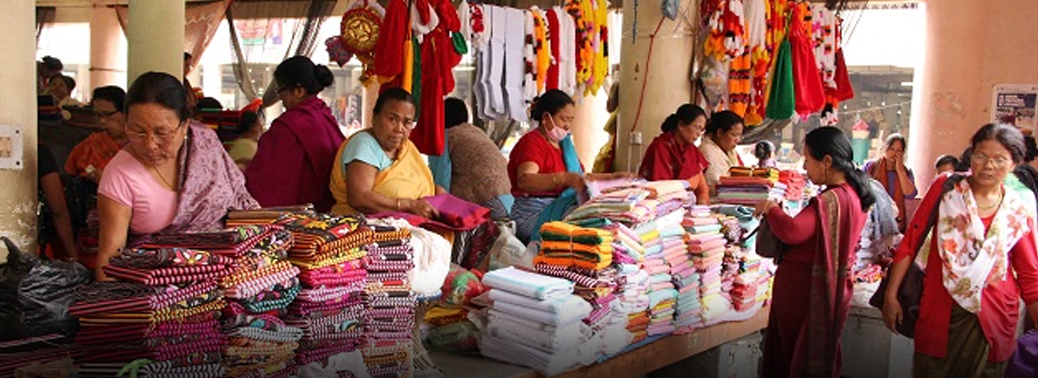DEENDAYAL ANTYODAYA LIVELIHOODS MISSION (DAY-NRLM)
24, Jul 2019

Prelims level : Governance- Schemes
Mains level : GS-II - Welfare schemes for vulnerable sections of the population by the Centre and States and the performance of these schemes; mechanisms, laws, institutions and Bodies constituted for the protection and betterment of these vulnerable sections
Background:
- Aajeevika – National Rural Livelihoods Mission (NRLM) was launched by the Ministry of Rural Development (MoRD).
- Aided in part through investment support by the World Bank.
- The Mission aims at creating efficient and effective institutional platforms for the rural poor, enabling them to increase household income through sustainable livelihood enhancements and improved access to financial services.
Objective:
- “To reduce poverty by enabling the poor households to access gainful self-employment and skilled wage employment opportunities, resulting in appreciable improvement in their livelihoods on a sustainable basis, through building strong grassroots institutions of the poor.”
NRLM Guiding Principles
- Poor have a strong desire to come out of poverty, and they have innate capabilities
- Social mobilization and building strong institutions of the poor is critical for unleashing the innate capabilities of the poor.
- An external dedicated and sensitive support structure is required to induce the social mobilization, institution building and empowerment process.
Facilitating knowledge dissemination, skill building, access to credit, access to marketing, and access to other livelihoods services underpins this upward mobility.
Salient features:
- Universal Social Mobilisation – At least one woman member from each identified rural poor household, is to be brought under the Self-Help Group (SHG) network in a time bound manner. Special emphasis is particularly on vulnerable communities.
- Participatory Identification of Poor (PIP) – NRLM Target Households (NTH) are identified through the Participatory Identification of Poor (PIP) instead of the BPL. The PIP is a community-driven process where the CBOs themselves identify the poor in the village using participatory tools. The list of poor identified by the CBO is vetted by the Gram Sabha.
- It provides Revolving Fund (RF) and Community Investment Fund (CIF) as resources in perpetuity to the institutions of the poor, to strengthen their institutional and financial management capacity and build their track record to attract mainstream bank finance.
- Financial Inclusion – it promotes financial literacy among the poor and provides catalytic capital to the SHGs and their federations
- Livelihoods – NRLM focuses on stabilizing and promoting existing livelihood portfolio of the poor in farm and non-farm sectors; building skills for the job market outside; and nurturing self-employed and entrepreneurs (for microenterprises).
- It implements Aajeevika Skill Development Programme (ASDP). 25% of NRLM Funds are earmarked for this purpose.
- ASDP facilitates building the skills of the rural youth and placement in relatively high wage employment in the growing sectors of economy.
- NRLM is encouraging public sector banks to set up Rural Self Employment Training Institutes (RSETIs) in all districts of the country on the lines of Rural Development Self Employment Institute (RUDSETI) model.
- NRLM, through Mahila Kisan Sashaktikaran Pariyojana (MKSP), is promoting and facilitating scaling-up successful, small-scale projects that enhance women’s participation and productivity in agriculture and allied activities.
MKSP also aims to ensure household food and nutrition security of the poor and the poorest of poor. - National Rural Livelihoods Project has been designed as a sub-set of NRLM to create ‘proof of concept’, build capacities of the Centre and States and create an enabling environment to facilitate all States and Union Territories to transit to the NRLM.
- NRLP would be implemented in 13 high poverty states accounting for about 90 percent of the rural poor in the country.
Other Schemes Under Day-NRLM:
Aajeevika Grameen Express Yojana (AGEY):
- To provide an alternative source of livelihoods to members of SHGs under DAYNRLM by facilitating them to operate public transport services in backward rural areas, as identified by the States.
Salient features:
- Under the programme, the Community Investment Fund (CIF) provided to Community based Organisations (CBOs) under the existing provisions of DAYNRLM scheme will be utilised to support the SHG members to operate the public transport services.
- It provides two options for implementation
- Option I:
- Vehicle will be financed by the Community Based Organisations (CBOs) out of its CIF corpus. The vehicle will be purchased and owned by CBO and leased to SHG member.
- The beneficiary SHG member will operate the vehicle on selected route and will pay a monthly lease rental to the CBO.
- The decision regarding the ownership of the vehicle after the cost of vehicle is fully paid up through lease rental will be taken by the CBO.
- Option II:
- CBO will provide an interest free loan from its CIF corpus to SHG member for purchase of the vehicle.
- SHG member will repay the loan over a maximum period of 6 years and bear all the costs connected with the operation of the vehicle, including annual cost of insurance, road tax, permit cost, maintenance cost and all other running costs of the vehicle (i.e., fuel, oil, etc.).
- After repayment of the loan, the ownership of the vehicle will be transferred to the SHG member.






